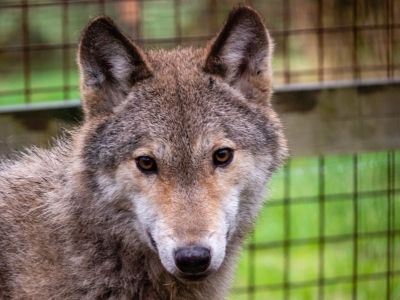Wolf Canis lupus
Animals in our sanctuary
Arman

Arman was confiscated as a pup from a woman in Ukraine together with another wolf. The woman kept several wild animals illegally as pets, including a badger. When she took one of the wolf puppies to the vet, because the badger had bitten the puppy and broken its bone, the vet informed the local authorities. They confiscated the animals and took them to a shelter. Now they can enjoy a spacious enclosure together and learn to be real wolves again.
Malish

Malysh was confiscated as a pup from a woman in Ukraine together with another wolf. The woman kept several wild animals illegally as pets, including a badger. When she took one of the wolf puppies to the vet, because the badger had bitten the puppy and broken its bone, the vet informed the local authorities. They confiscated the animals and took them to a shelter. Now they can enjoy a spacious enclosure together and learn to be real wolves again.
Where does it feel at home?
The wolf lives on the tundra, steppes, prairies, dense forests, lowlands and mountains of the northern hemisphere.
What does it like to eat?
If the wolf is part of a pack (group), larger ungulates such as moose, red deer, roe deer and wild boar are mainly on the menu. If the wolf has to hunt alone, rodents, lagomorphs and birds are more likely to be its prey.
Interesting facts
- The wolf can hear tones up to 40 kHz, tones too high for human hearing.
- Dogs and wolves can produce fertile offspring.
- Wolves can see almost all around them at a 270 degree angle. Humans can only see 180 degrees around them.
- The few individuals in the pack who are allowed to reproduce are the most productive during the hunt.
- Wolves can run fast, from 50 to 60 km/h. They can also swim.
- There is a case where a wolf covered 190 kilometres in one day.
- A lone wolf in search of a partner can travel very long distances, up to one thousand kilometres.
- Defining a territory is done by urinating. This is only done by the dominant animals.
- They communicate with sounds, body language and scents.
- Wolves from different areas howl in a different way. They do understand each other.






